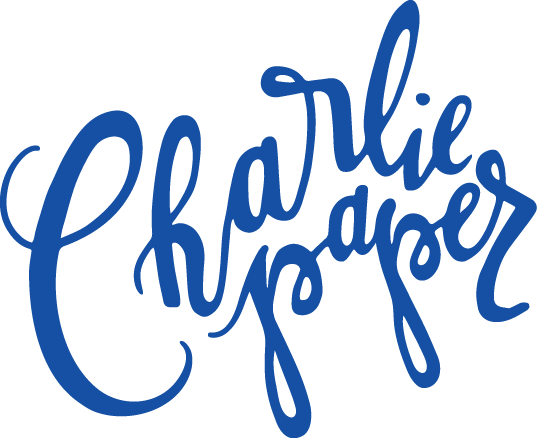Perfectly Printed
Designing unique and wonderful paper goods always ends with one thing - printing!
Below is a detailed look at different printing methods and the advantages and limitations of each one.
Digital Printing
Digital printers transfer four colors of ink (cyan, magenta, yellow, and black) to paper simultaneously, producing a full-color print after only one pass through the printer – meaning that each invitation takes less time to print and is less expensive to produce than other printing methods. Unlike letterpress and foil stamping, which leaves a relief impression, and engraving, which produces raised text, digital printing produces a flat image without any texture. Since printing plates aren’t required, it’s a cost effective way to print a low number of pieces (like 50 invitations, for example), and you aren’t limited to the number of colors you can use in one piece. That means it’s a great way to reproduce beautiful watercolors, hand illustrations, and photographs. You can also combine digital printing with letterpress or foil to create a unique invitation that uses the best elements from each process.
Tips & Advice:
- You are not limited on the number of colors you can use
- Quicker and more cost effective than other methods of printing
- Limited on paper thickness and texture
- Cannot print white or metallic ink
- Can feel a little more casual than other printing methods
Cost: $
Letterpress Printing
Letterpress printing has become the go-to printing technique for invitations, greeting cards, and business cards for anyone hoping to make an impression on the recipient. Letterpressing started around the late 1800s. What began with hand-set wood and metal type has become an industry centered around the photo polymer plate. Designing for letterpress today begins on a computer, and as such, new fonts, embellished ornaments, graphics, patterns, and complicated multi-color designs can be produced with relative ease. The printing part however, is still by hand, one at a time. A separate plate is produced for every color being printed, and the paper is run through the press at least once for each color in the design.
Tips & Advice:
- You are not limited on the thickness and texture of your paper
- Great for fine type and line work
- Takes some time. A two week turn around is common
- Not ideal for printing solid fields of color
Cost: $$
Foil Stamping
Foil stamping is a specialty printing process that uses heat, pressure, metal dies and foil film. Metallic foil is most commonly seen today – particularly gold foil, silver foil, copper foil, and holographic metallic foils – but foil rolls are also available in solid colors in both glossy and matte finishes. Foil stamping is somewhat similar to letterpress and engraving, in that the color is applied to paper with pressure. Metal dies are heated and then stamped with enough pressure to seal a thin layer of foil to the paper, and each color is applied individually through multiple runs of the press to create the final design. Foil stamping can also be combined with digital printing to add some extra shine to your invitation.
Tips & Advice
- Foils are great for printing on dark or colored paper
- Metallic foils have a shiny, lustrous finish with a big visual impact
- Foil stamping is labor intensive which, like letterpress, also takes some time to complete
Cost: $$$
Finishing Touches
Finishing techniques include things like die cutting, perforations, edge painting and duplexing. Want your menus in the shape of a fan or another funky shape? You’ll be needing a custom die cut. Duplexing is when 2 sheets of thick stock are glued together to give a double-thick result. If you are printing on a double-thick stock, consider edge-painting to add a bright or metallic color to the edges of the card, adding a surprise pop of color. You can also use duplexing to combine a two different colors of card stock, like ecru and navy, to create major impact on both the front and back of an invitation.





